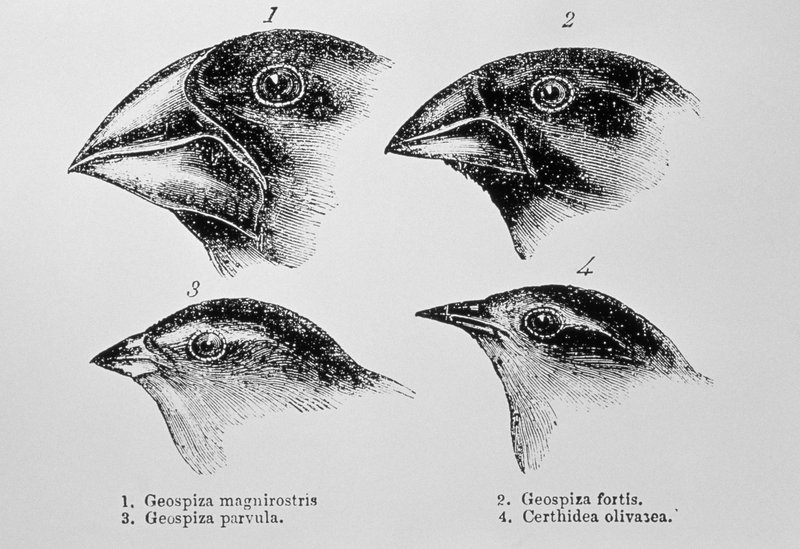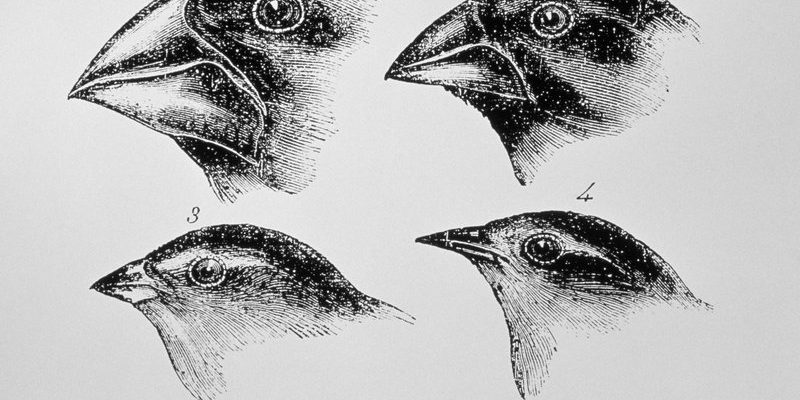
Let’s dive into the remarkable history of finches, starting from their earliest ancestors to the present day. Along the way, we’ll explore their unique adaptations, their role in ecosystems, and the famous Darwin’s finches that helped change our understanding of evolution. So, grab a cup of coffee, and let’s explore the world of finches together!
The Origins of Finches
Finches belong to the family Fringillidae, a group that is believed to have started evolving around 25 million years ago. These birds likely appeared in Eurasia and gradually spread to different parts of the world. Imagine them like pioneers, moving into new territories and adapting to various climates and habitats. This adaptability is one of the key factors in their evolutionary success.
The earliest finches were small, seed-eating birds. Their basic body structure suited them well for foraging in grasslands and forests. Over time, as they spread to different environments, they started to develop distinct characteristics based on their surroundings. For example, in areas with abundant seeds, finches developed strong, conical beaks, perfect for cracking open tough shells. This diverse range of finch adaptations is a testament to the power of natural selection.
Darwin’s Finches: A Case Study
When you hear about finches in an evolutionary context, you can’t ignore Darwin’s finches. These birds became famous because they were observed by Charles Darwin during his voyage to the Galápagos Islands in the 1830s. He noticed that the finches on the islands had evolved different beak shapes based on the types of food available in their specific environments.
For example, some finches had large, robust beaks for cracking seeds, while others had long, slender beaks suited for probing flowers for nectar. This diversity emerged as each species adapted to its specific niche. It’s like a group of friends each picking their own unique hobby that suits their personality. Understanding this helped Darwin piece together his theory of evolution by natural selection.
The story of Darwin’s finches shows how small changes can lead to significant variations over time. They’ve become a classic example in evolutionary biology, underlining how species can adapt to their surroundings in remarkable ways.
The Role of Finches in Ecosystems
Finches play a crucial role in their ecosystems. They are not just beautiful additions to our flora and fauna; they contribute to seed dispersal and plant pollination. Imagine walking through a garden and watching a finch flitting from flower to flower. As it sips nectar, it unintentionally picks up pollen and spreads it to other plants, helping them reproduce.
Moreover, finches are also a food source for many predators, including larger birds and mammals. Their presence in the ecosystem helps maintain a balance of species and contributes to the overall health of their habitats. In a way, they are like tiny cogs in a vast machine, each playing a vital role in keeping everything running smoothly.
Another fascinating aspect is their social behavior. Many finch species are known for their complex social structures. They often gather in flocks, which can help protect them from predators. It’s like having a team of allies looking out for each other, making survival a little easier.
Adaptations and Diversity
Finches are a textbook example of how species adapt to their environments. Their diversity in size, plumage, and feeding habits is striking. For instance, the house finch has a varied diet that includes seeds, fruits, and even discarded food scraps. This flexibility allows them to thrive in urban settings, where food sources can be unpredictable.
Meanwhile, some finches have evolved to live in extremely specialized niches. The Cactus Finch, for example, feeds on insects and nectar from cacti and has developed a unique beak shape to access these resources. This specialization is fascinating because it highlights how finches can shift their diets to match available resources without straying far from their core identity as seed-eaters.
These adaptations not only showcase the finch’s resilience but also the ongoing nature of evolution. As environments change—due to climate change, habitat destruction, or other factors—finches may continue to adapt in ways we haven’t even begun to understand.
Conservation Issues Facing Finches
As charming as finches are, they face numerous threats today. Habitat destruction, climate change, and invasive species are among the top challenges putting pressure on finch populations. For example, in the Galápagos Islands, introduced species have disrupted the natural balance, affecting the availability of food and nesting sites for native finches.
Conservation efforts are essential to ensure that these remarkable birds don’t vanish. Various organizations are actively working to protect habitats and restore ecosystems, which can help maintain healthy populations of finches. Think of it as a group effort to safeguard not just finches but the entire ecosystem they inhabit.
Raising awareness about the importance of conservation can also lead to more people taking action. Simple steps, such as planting native plants in your garden or reducing plastic waste, can contribute to creating a more welcoming environment for finches and other wildlife.
Finches in Culture and Symbolism
Finches have also found their way into human culture and symbolism. In many cultures, they represent happiness, joy, and freedom. Their cheerful songs and vibrant colors inspire artists, writers, and nature enthusiasts alike. You might have noticed that finches often symbolize new beginnings, much like the arrival of spring.
In literature, finches appear as symbols of resilience and adaptability. They remind us that even the smallest creatures can overcome obstacles and thrive. This message resonates very much in our lives, encouraging us to be more adaptive and resilient in the face of challenges.
With their intriguing history and resilience, finches serve as a reminder of the beauty and complexity of nature. They inspire us to cherish the natural world and consider our role in preserving it.
The evolution and history of finches are captivating tales of adaptation, survival, and resilience. From their ancient origins to the diverse array of species we see today, finches offer insights into the forces of evolution and the delicate balance of ecosystems. They remind us that even the smallest creatures can make a big impact.
As we continue to learn from these remarkable birds, it’s essential to acknowledge the importance of conservation and our role in protecting their habitats. By cherishing and preserving finches, we’re not just protecting a species, but we’re also safeguarding the intricate web of life that connects us all. So the next time you see a finch, take a moment to appreciate the journey it has taken—after all, it’s a story as old as time itself.

